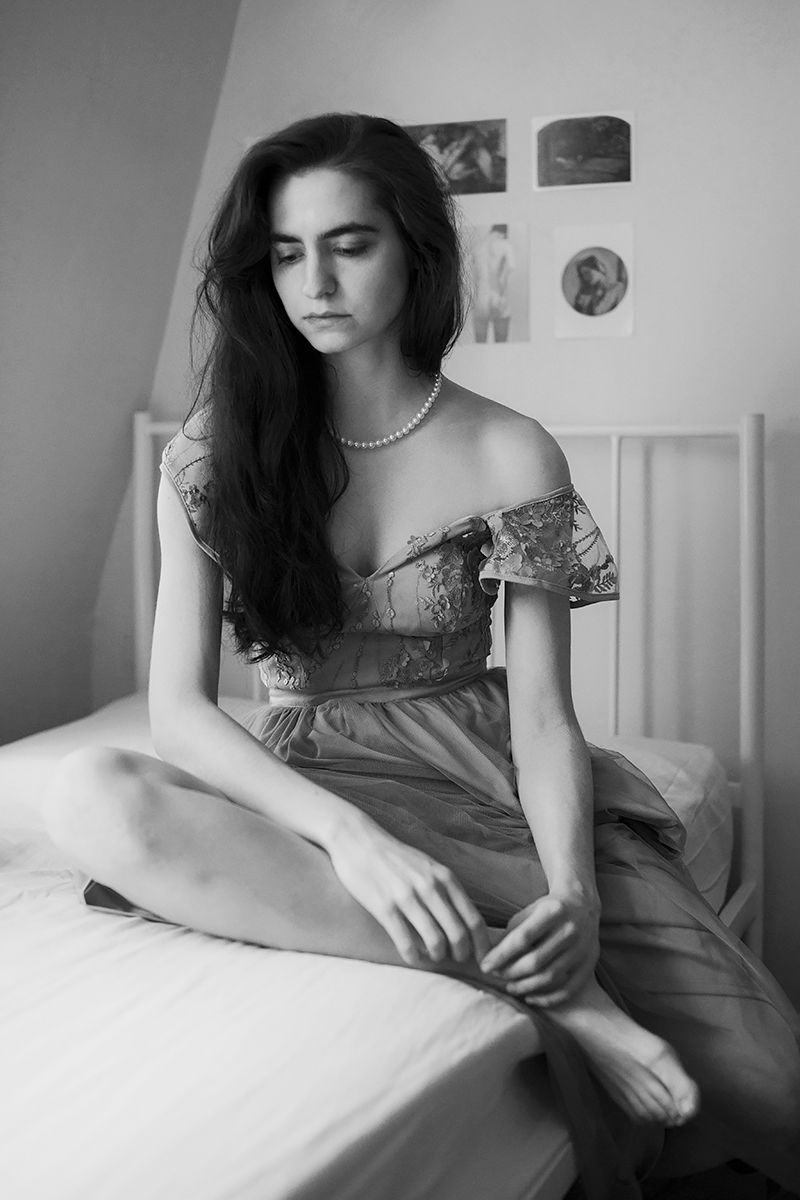Iness Rychlik is a Polish-born photographer and filmmaker with a particular interest in historical drama. Despite her severe myopia, she has been dedicated to visual storytelling for over a decade.
Iness graduated with First Class Honours in Film from Screen Academy Scotland. Set in Victorian London, her final-year film ‘The Dark Box' follows an unhappily married woman, who pursues photography to escape from her oppressive relationship. ‘The Dark Box' premiered at Camerimage, where Iness received a Golden Tadpole nomination for her cinematography.
Rychlik is recognised for her dark feminine erotica. She is fascinated by the idea of conveying sexuality and cruelty in a subtle evocative way. Her conceptual self-portraits aim to provoke the viewer's imagination, rather than satisfy it.
ARTIST STATEMENT
Although greatly influenced by historical drama, my work is deeply personal and symbolic in nature. I suffer from a hyper-sensitive skin condition. As a teenager, I would often attempt to cover it up; I resented being asked if I had accidentally burnt myself. Throughout the years, I have learnt to see my skin as a canvas of expression, rather than an ugly inconvenience that should be kept hidden. I use my very own body to explore the themes of solitude and objectification, often employing antique garments or props to depict the parallels between my experiences and the inferior female position in Victorian Britain. I honour the concept of transforming hidden pain into art – exposed, disturbing and beautiful.
